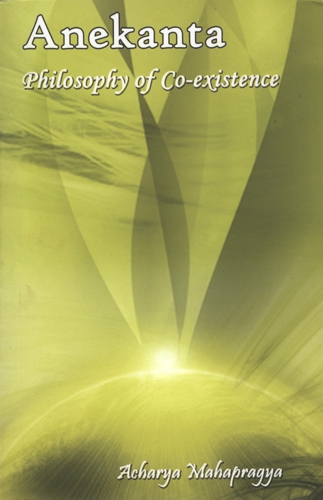Chapter 6

The Doctrine of Nayas: Infinite Modes and Infinite Approaches
Niksepa or Classification of Import of Words
Niksepa stands for a special method of exposition of the import of words. A word expresses numerous modes and shades of its import. For the expression of such modes and shades the selfsame word is qualified by a number of adjuncts. For instance, the 'indra' can be used as a name of a particular person (nāma-indra) or an image of the king of heaven (sthāpanā-indra) or person who once enjoyed the status of the king of heaven (dravya-indra) or a person actually enjoying the glory and magnificence of the king of heaven (bhāva-indra).
The method of niksepa was developed in the Agamic period itself. In the speculative period and also in the period of logical developments, the method continued to flourish. While rhetorics give the method of determining the particular meaning of a multisensed word, it is only the commentaries on the Jaina āgamas, which give the method of determining the intended meaning of a unisensed word. This method is useful not only for the treatises on logic but the analytic approach of this method has a universal utility. In that it is a valuable instrument for defining the intended meaning and purpose of any systematic treatise on any subject.
The gradual development of knowledge and practical behaviour including verbal expression takes place in the following order - the object in its wholeness is known through valid cognition (pramāna) in the first instance, and subsequently the same object is cognized in parts through the nayas (viewpoints). All our knowledge is synthetic in the beginning, and becomes analytic at the next stage. When an object is known through valid cognition and the nayas, a name is assigned to it. For instance, a thing of a particular shape and capable of holding water is named ‘jar’. This nomenclature is responsible for the relationship of denotative and denotatum between the word 'jar’ and its referent (the objective jar). This is the initial stage of word-meaning relationship which undergoes semantic expansion in due course. Thus a drawing or a picture of ajar, though incapable of carrying water, is also called jar; likewise a mass of clay (material cause of jar) and a Potsherd is also called jar. At this stage of semantic expansion it becomes imperative to ascertain the intended meaning of a w°rd precisely in a particular context of its use. It is only for the purpose of defining the particular intended meaning of such word that an adjunct is added to it. This method is called the classification of imports of words (niksepa).
There is no prescribed limit of exposition through niksepa. The scope of such classification of imports is co-extensive with the range of meanings that a word is capable of expressing. The minimum types of such classification are four - an object must have some name and also some shape; it had also modes that are past, as well as the modes that are to come along with the modes that it has at present. This is how the four basic niksepas naturally follow:
- A name (nāma-niksepa) or a demonstrative symbol.
- Form (sthāpanā-niksepa), an image, imaginary or real.
- Substance (dravya-niksepa), past or future modes of the material cause.
- Essence (bhāva-niksepa), the present mode constituting the essence of the thing.
Ācārya Jinabhadragani Ksamāśramana's exposition of niksepa is quite different. According to him the nāma-niksepa consists in nomenclature of a thing, while its shape, material cause and the effect are respectively the sthāpanā, dravya and bhāva niksepa. In fact, the nomenclature, assumption of a form, causality and the sequel are the minimum determinations of a thing. An object, therefore, must necessarily have these four determinants.
 Acharya Mahaprajna
Acharya Mahaprajna

